Dorimsa Temple in Daegu, Designated to Operate Templestay Programs by the Cultural Corps of Korean Buddhism
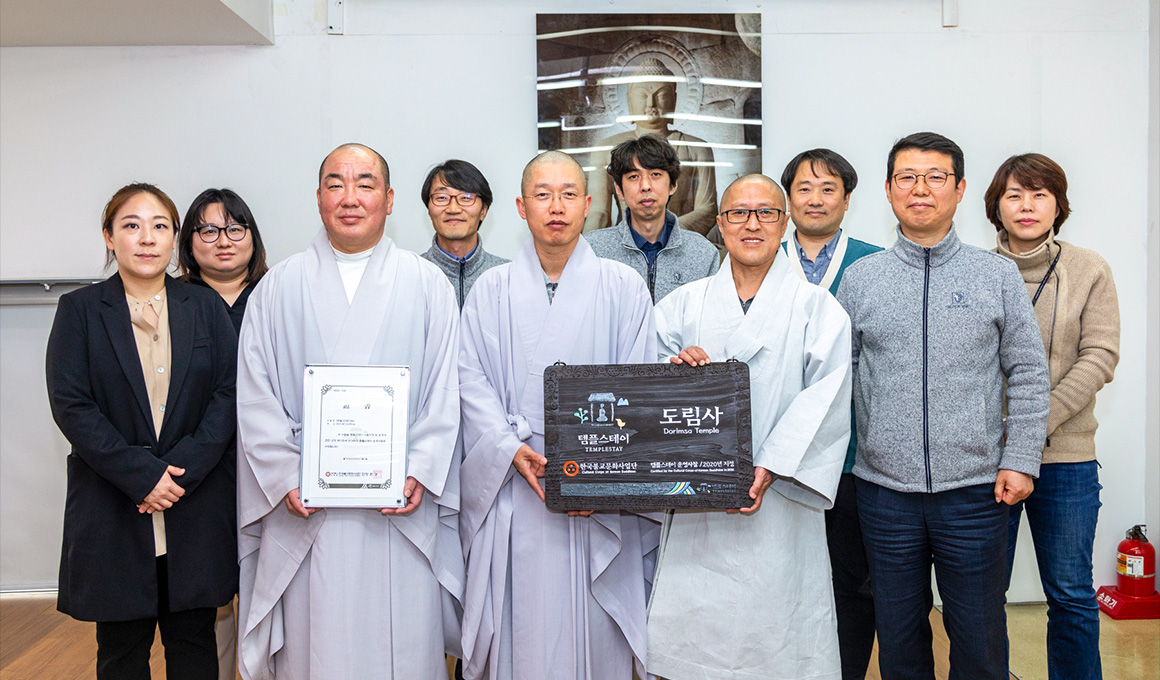
Bestowal Ceremony of the Certificate and Door Plaque a Success
Another temple has now been designated to operate Templestay programs upon meeting formidable requirements. Dorimsa Temple on Mt. Palgongsan in Daegu has added its name to the list of “2020 Templestay Operation Temples,” designated by the Cultural Corps of Korean Buddhism, after going through strict screening and systematic training. Having been selected as a preliminary Templestay temple on Sep. 18, 2018, Dorimsa has operated its Templestay programs for over a year with the theme “Dori Dori.” To date, 2,492 people have participated, both Koreans and non-Koreans, and the response has been favorable. The theme “Dori Dori” has a dual meaning: one is to realize the principles of the Way, and the other refers to babies shaking their heads left and right. Thus, the theme embodies the staff’s resolution to guide people to awakening with the mind of a beginner, like a baby who learns to shake their head by mimicking their mommy as she repeats, “Dori Dori!”
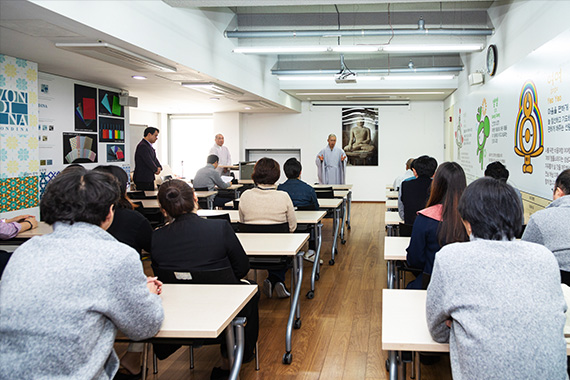
On April 13, 2020, Munsu Hall on the 3rd floor of the Cultural Corps of Korean Buddhism was the venue to bestow the certificate and door plaque for Templestay operation to Dorimsa. Presenting them was Ven. Won-gyeong, director of the Cultural Corps of Korean Buddhism, who congratulated them saying, “Fully prepared to operate Templestay in terms of natural environment and facilities, Dorimsa can give an enriched experience in Buddhist culture to participants. The Cultural Corps of Korean Buddhism will not spare our support to help you fulfill this purpose.” Ven. Abbot Jong-hyeon of Dorimsa expressed his own aspiration saying, “Rather than waiting for people to come to us, we will actively strive to come closer to them. We’d like to become one of those representative Korean temples that promote the excellence of Korean Buddhism near and far.”
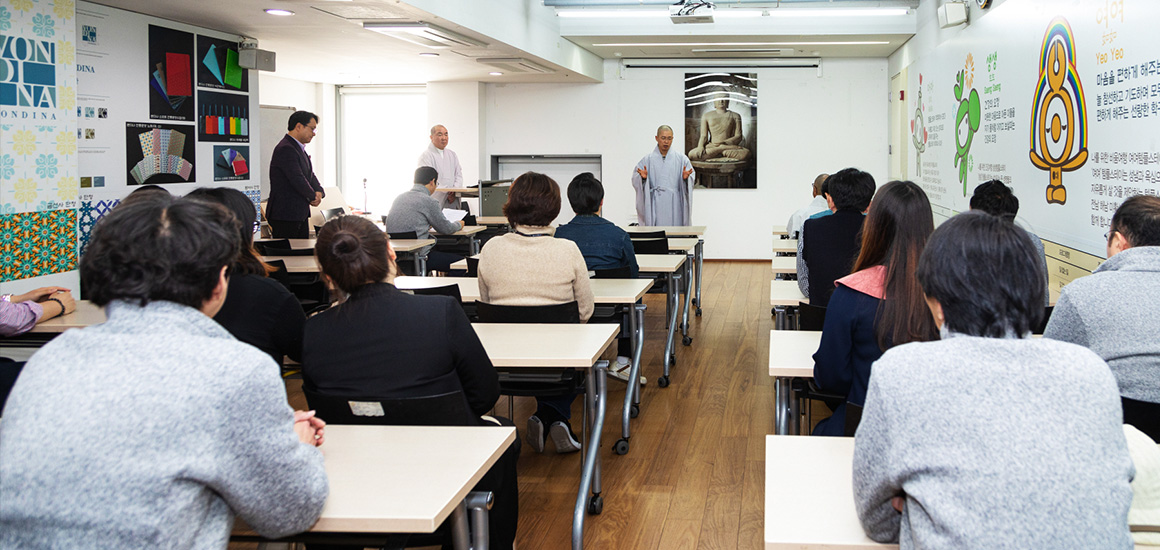
On April 13, 2020, Munsu Hall on the 3rd floor of the Cultural Corps of Korean Buddhism was the venue to bestow the certificate and door plaque for Templestay operation to Dorimsa. Presenting them was Ven. Won-gyeong, director of the Cultural Corps of Korean Buddhism, who congratulated them saying, “Fully prepared to operate Templestay in terms of natural environment and facilities, Dorimsa can give an enriched experience in Buddhist culture to participants. The Cultural Corps of Korean Buddhism will not spare our support to help you fulfill this purpose.” Ven. Abbot Jong-hyeon of Dorimsa expressed his own aspiration saying, “Rather than waiting for people to come to us, we will actively strive to come closer to them. We’d like to become one of those representative Korean temples that promote the excellence of Korean Buddhism near and far.”
(Left)Ven. Won-gyeong (Right)Ven. Abbot Jong-hyeon

Dorimsa is the 176th Templestay operating temple to be designated by the Cultural Corps of Korean Buddhism. It offers the superb scenery of Mt. Palgongsan, and a walking meditation path to a renowned Korean prayer site where the Gatbawi Buddha is enshrined. Established by Ven. Dorim Beopjeon, the 11th and 12th Supreme Patriarch of the Jogye Order, and a temple devoted to the cultivation of filial piety, Dorimsa’s next moves in its Templestay operation are eagerly anticipated.
Mitasa Temple in Eumseong, Designated to Operate Templestay Programs by the Cultural Corps of Korean Buddhism
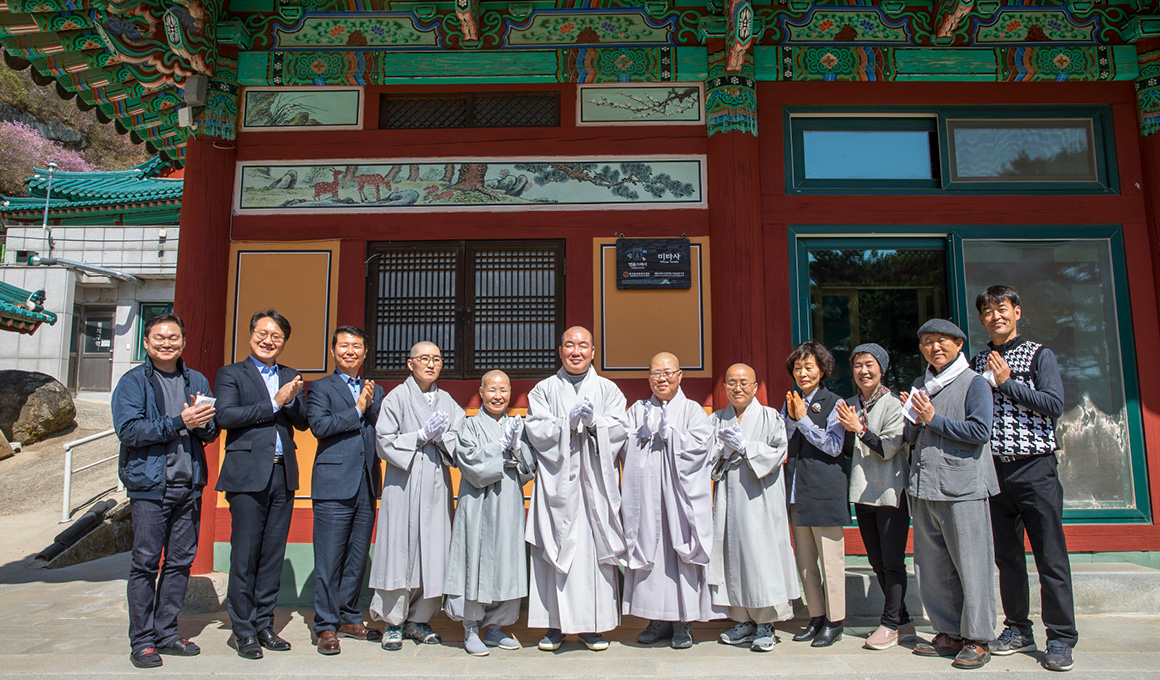
Bestowal Ceremony of the Certificate and Door Plaque a Success
One more temple has also now been designated to operate Templestay programs. Mitasa Temple in Eumseong, Chungbuk Province, has earned the status to operate Templestay programs this year after going through rigorous screening by the Cultural Corps of Korean Buddhism. On April 14, 2020, a certificate and door plaque for Templestay operation was bestowed to Mitasa at a ceremony held in the temple compound. For over a year Mitasa has operated Templestay programs geared to promote mind development, attracting 1,300 participants and receiving favorable responses. Their program’s theme is “Savaha Templestay,” which literally translates to “love and view others with humility.” Mitasa’s staff of monastics and lay Buddhists embody the spirit of caring and warmth in everything they do.
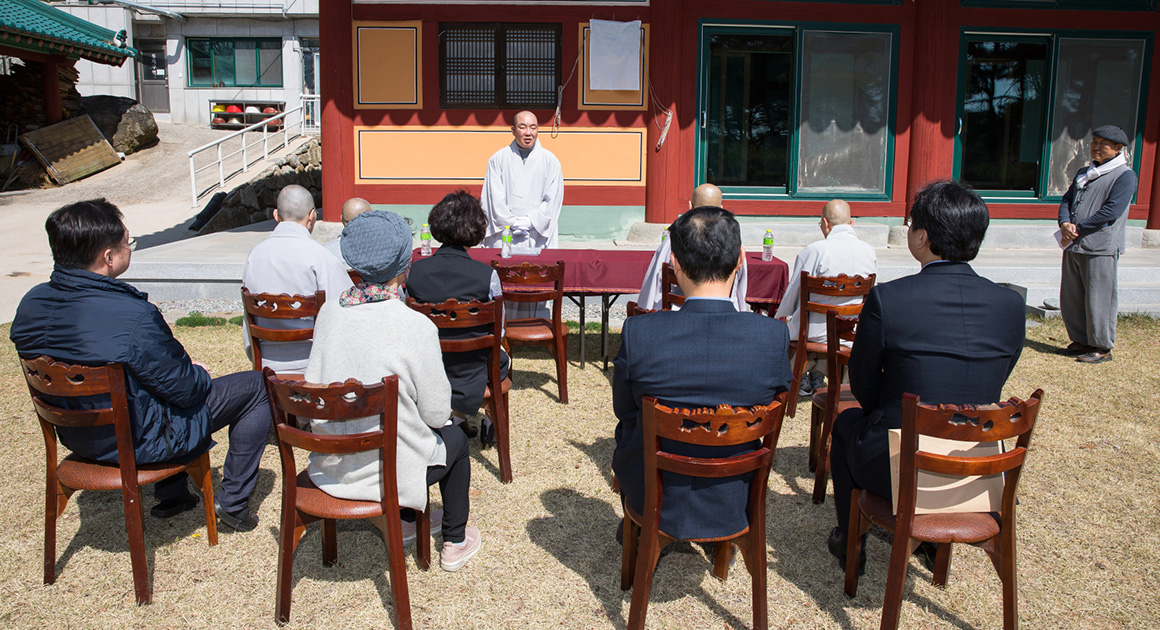
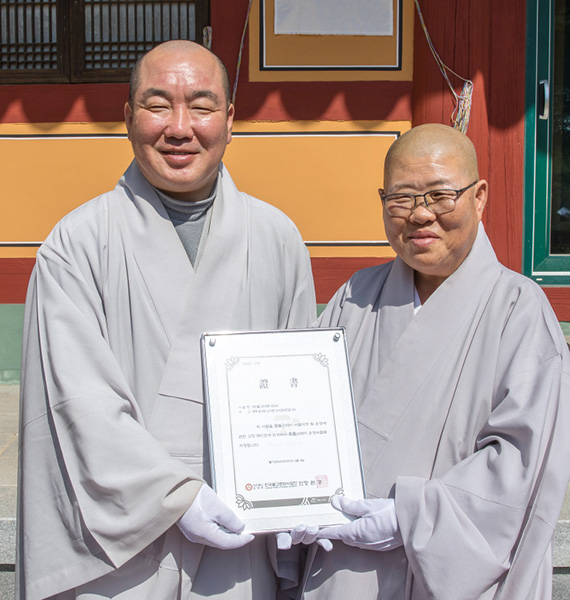
Bestowing the certificate to operate Templestay programs, Ven. U-seok, executive secretary of the Cultural Corps of Korean Buddhism, said, “All over the world people go through unprecedented difficulties these days. I think it especially significant to add another temple to the Templestay operation effort in these harsh times. Arriving here in the temple compound, I can see that Mitasa is well qualified to operate Templestay programs. I hope you give strength and support to many people, including the local community.” Ven. Abbot Hui-won of Mitasa Temple delivered her greeting, saying, “My heart brims with gratitude to all who have worked together to make today possible. Where practitioners have gathered who care about people just because it is the right thing to do, who like to have their faith strengthened by being together, that is Mitasa. I hope more people can join us in this work.”
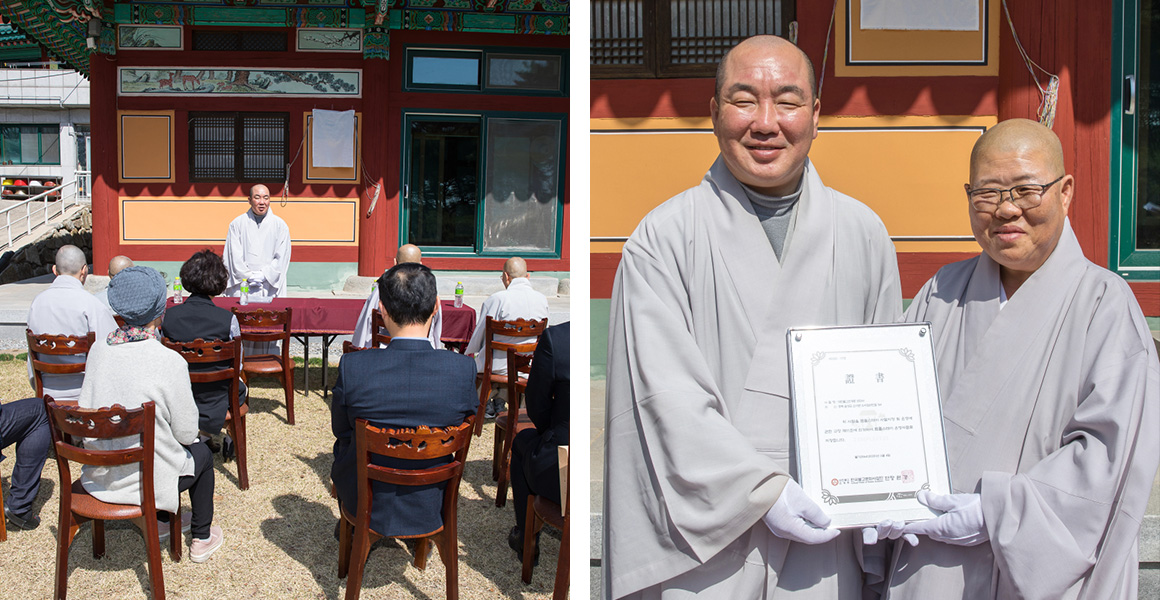
Bestowing the certificate to operate Templestay programs, Ven. U-seok, executive secretary of the Cultural Corps of Korean Buddhism, said, “All over the world people go through unprecedented difficulties these days. I think it especially significant to add another temple to the Templestay operation effort in these harsh times. Arriving here in the temple compound, I can see that Mitasa is well qualified to operate Templestay programs. I hope you give strength and support to many people, including the local community.” Ven. Abbot Hui-won of Mitasa Temple delivered her greeting, saying, “My heart brims with gratitude to all who have worked together to make today possible. Where practitioners have gathered who care about people just because it is the right thing to do, who like to have their faith strengthened by being together, that is Mitasa. I hope more people can join us in this work.”

Established by Wonhyo, a great monk of the Silla era about 1,300 years ago, Mitasa burned to the ground in 1723 during the reign of King Yeongjo. In 1963, it began to be reestablished by Ven. Myeong-an, the teacher of its current abbot, Ven. Hui-won. Nestled on Mt. Gaseopsan, Mitasa possesses all the beauty of a secret garden. The temple is home to the Rock-Carved Standing Sakyamuni Buddha (Chungbuk Tangible Cultural Property 130), the Standing Ksitigarbha Bodhisattva (41 m high and the largest in Asia), a Dharma Bell weighing 1,800 kg, an elderly care center and a memorial park. Exuding the cozy feeling of a mother’s bosom, Mitasa can help visitors realize the true meaning of “peace” and “recovery.”





